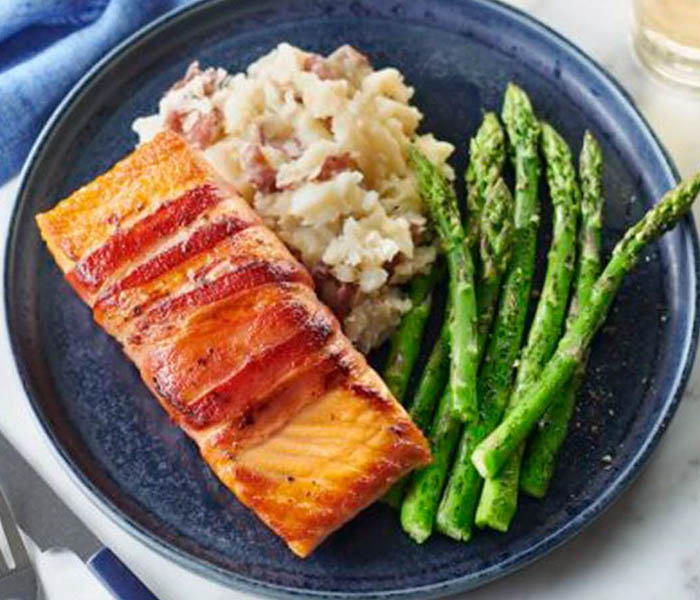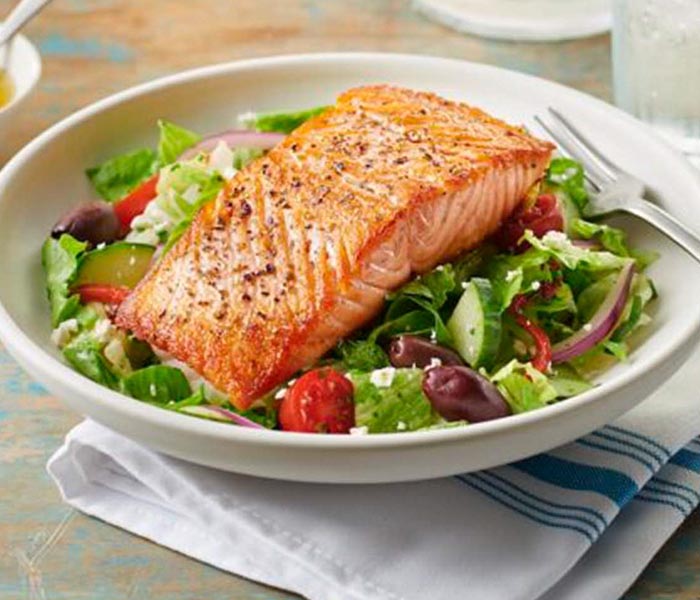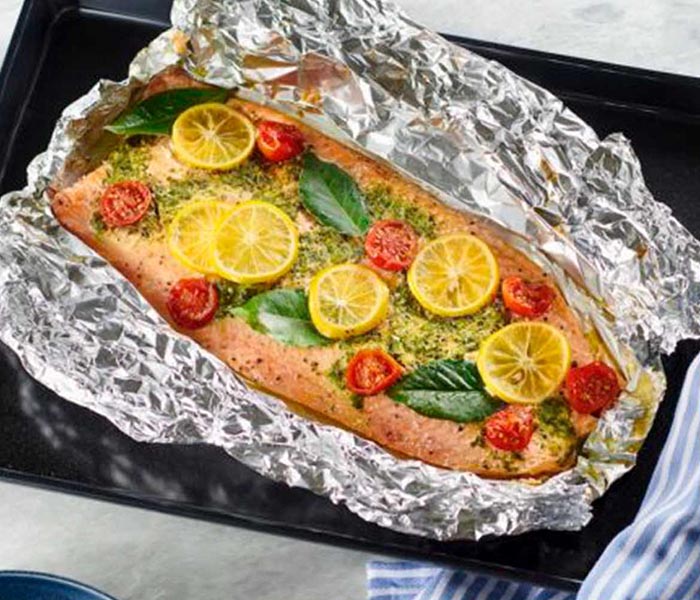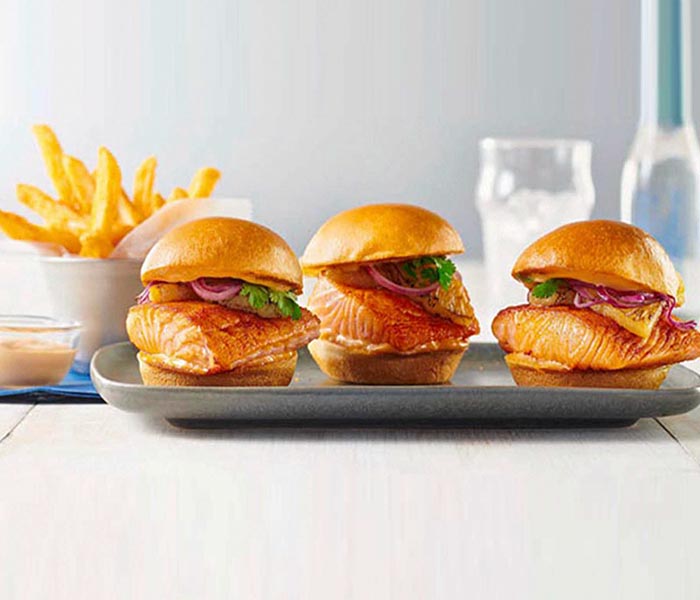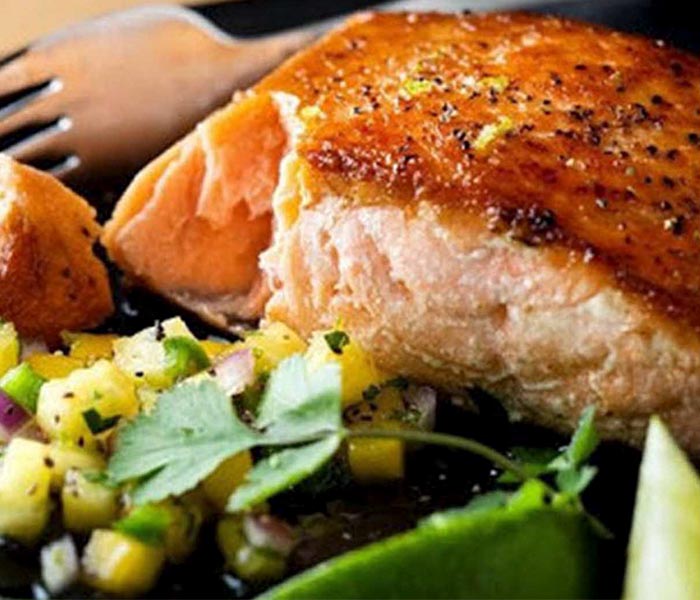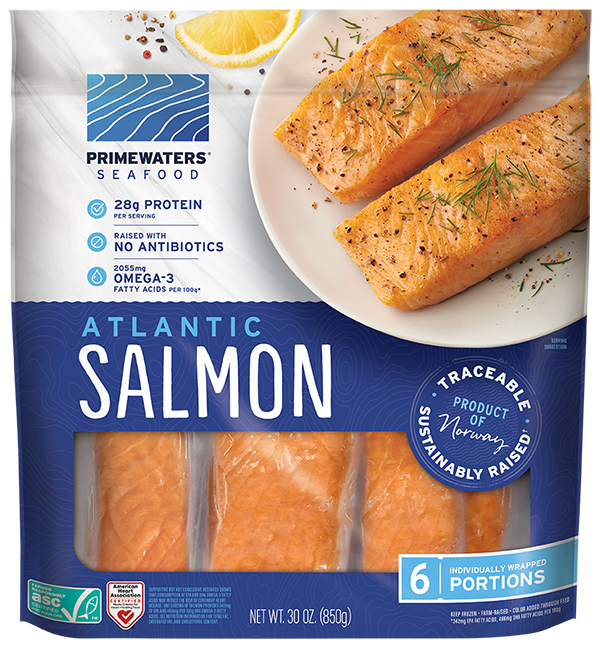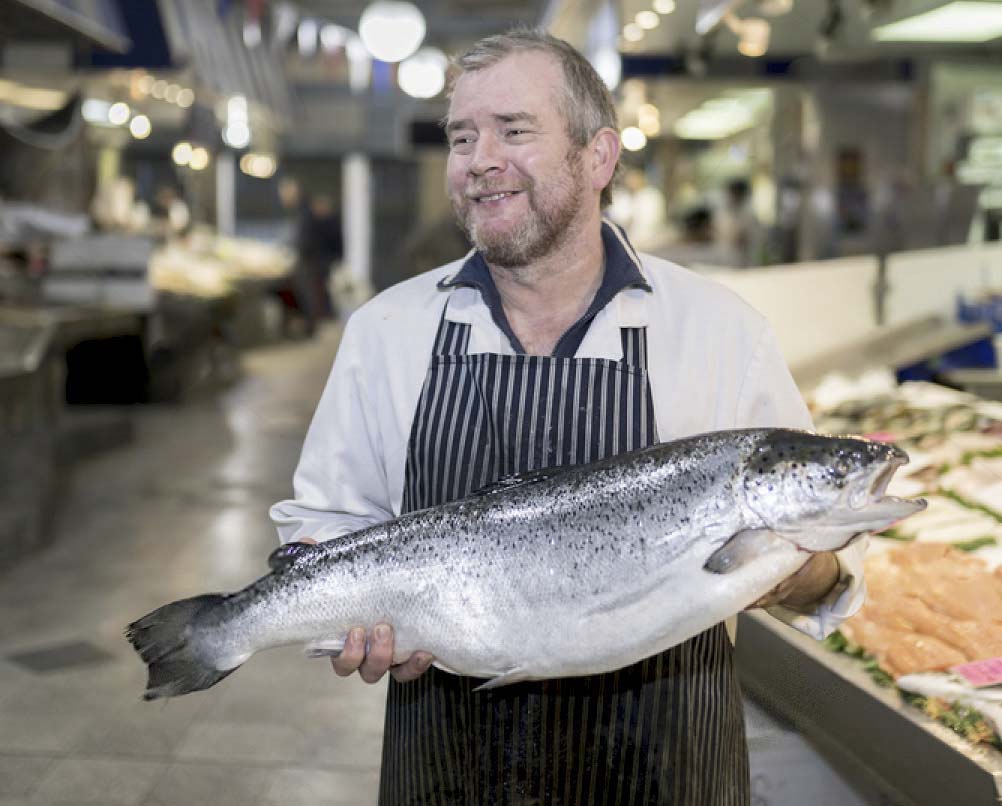
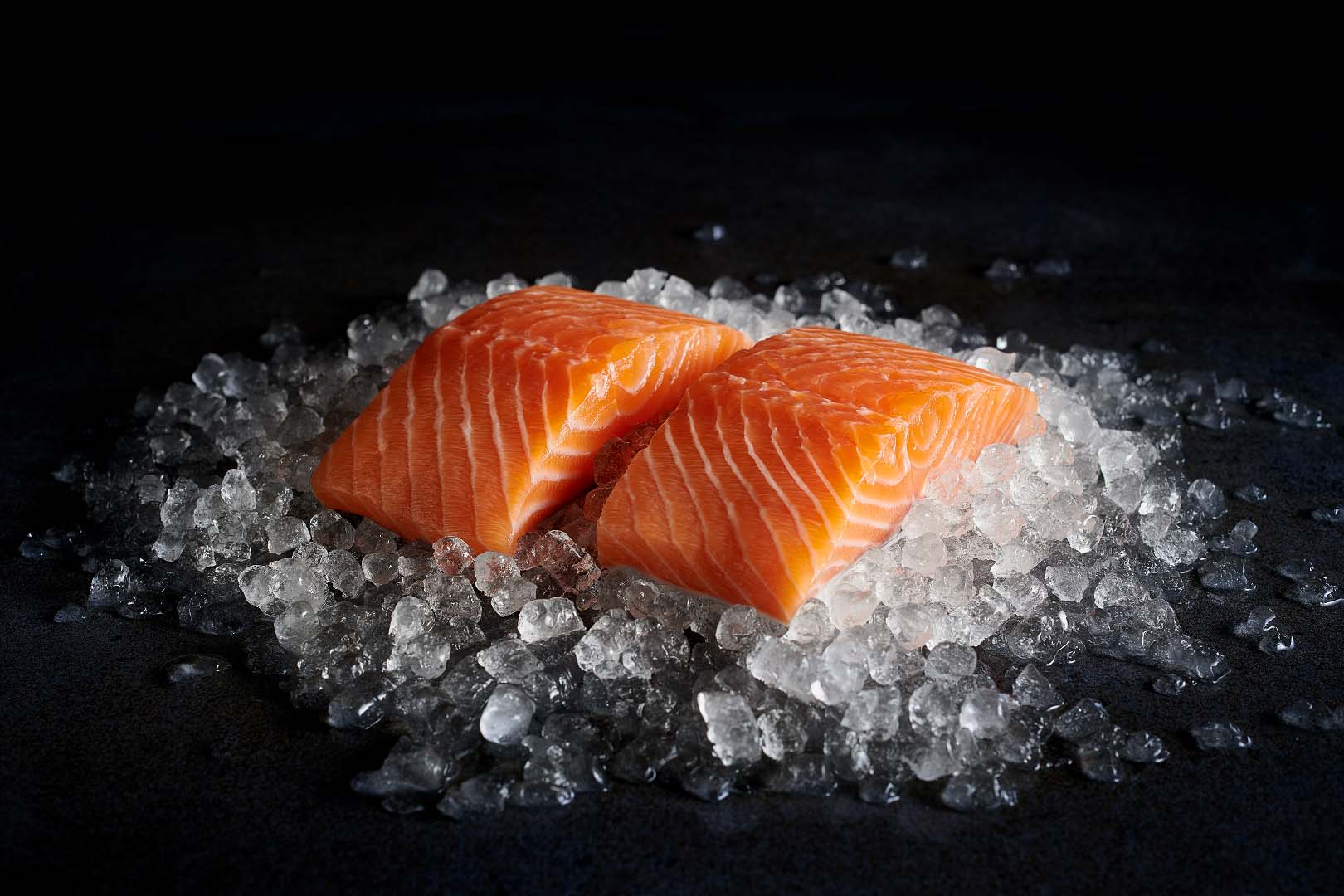
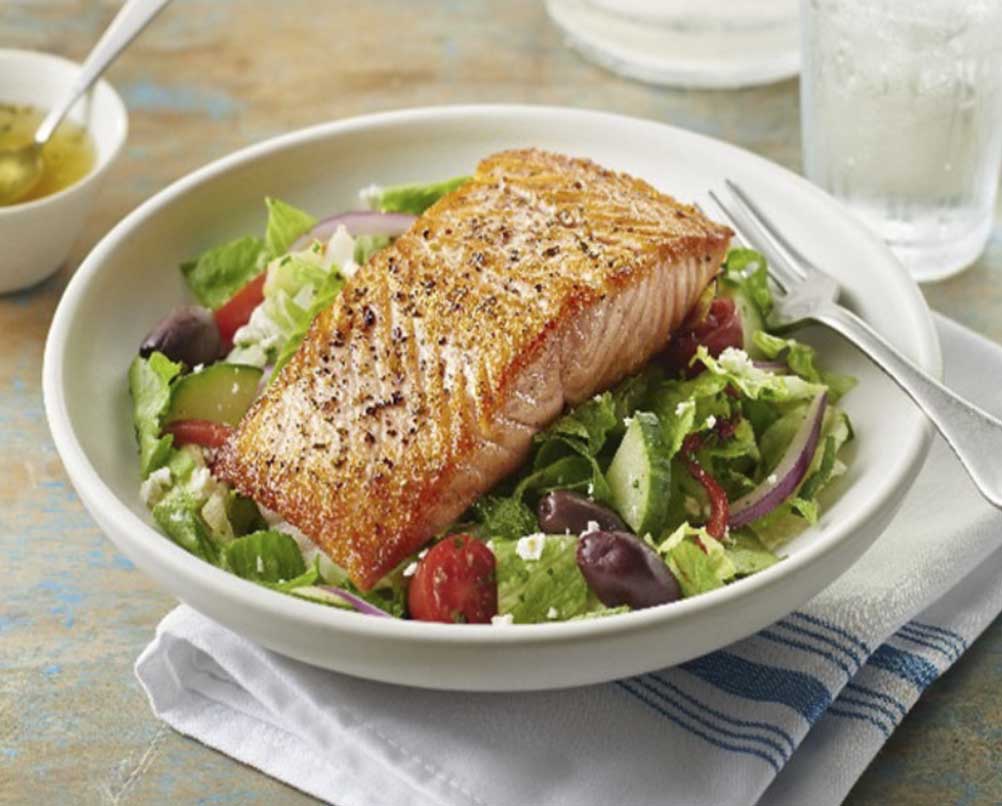
Salmon
Atlantic salmon is the most common type of salmon that you might find at your local grocery store. It is easy to prepare and is great for a variety of dishes. It’s also an excellent source of protein and vitamin D and a source of Omega-3 fatty acids.
Raised
Farmed
Main origins
Chile, Canada, Norway
TASTE
Clean & mild
Texture
Buttery

RECIPE IDEAS
Flavor Pairings
Atlantic salmon pairs well with citrus, herbs, bold Asian flavors, like sesame and ginger, and vegetables like asparagus and broccoli.
Wine Pairings
Chardonney, Sauvignon Bianc, chilled Pinot Noir.
COOKING METHODS
Salmon is a versatile fish and can be deliciously cooked in a variety of ways. Salmon should be cooked to an internal temp of 145ºF.

Bake
at 375º for 2-3 mins
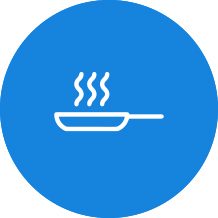
Stove top
Mid-high 4 min per slide

Grill
High heat 3mins per side

Broil
6 to 8 mins
Why frozen
Frozen seafood has many benefits you may not be aware of including the locked-in taste and texture of seafood which was frozen at the peak of freshness.
Learn More
Since seafood is frozen at its peak of freshness, flavor, nutrition and texture are locked in.
Frozen seafood has less risk of cold chain management issues, leading to potential food safety concerns.
In many cases, frozen seafood does not require expedited air and ground shipping across the globe, resulting in less energy usage.
Frozen seafood is generally less expensive than fresh given reduced shipping costs.
Frozen seafood is generally more efficient given less waste from spoilage throughout the supply chain.
Why Farmed
As the global population grows resulting in increased demand for seafood, there is mounting pressure on the world’s wild fish stocks. Responsibly-farmed seafood can help alleviate this pressure on wild fish stocks as well as the environment.
Supply
The growing global population and increased demand for seafood is putting pressure on wild fish stocks. Longer-term, there may not be enough naturally-occurring seafood in our oceans to continue to catch it wild, without harming these natural populations.
Environment
Responsibly-farmed seafood helps minimize some of the potential negative environmental impacts of commercial fishing, including boat pollution, lost and broken nets and by-catch, thereby better protecting the populations of other species who live in the oceans, like dolphins.
Diet
Farmed seafood is raised in controlled settings with controlled diets. In addition, farmed seafood is usually fed a diet which is generally more nutrient-dense, requiring them to consume less overall than wild caught. By controlling the diet, seafood farmers can control nutrients closely to help keep the fish healthy.
Certifications
Not all farmed seafood is sustainable, however, so look for sustainability certifications, like the Aquaculture Stewardship Council (ASC), so you know your seafood was sourced responsibly.
- Excellent source of protein
- 2055mg Omega 3 Fatty Acids (342mg EPA Fatty Acids, 446mg DHA Fatty Acids per 100mg)
- Excellent source of Vitamin D
- Naturally gluten-free, soy-free and dairy-free
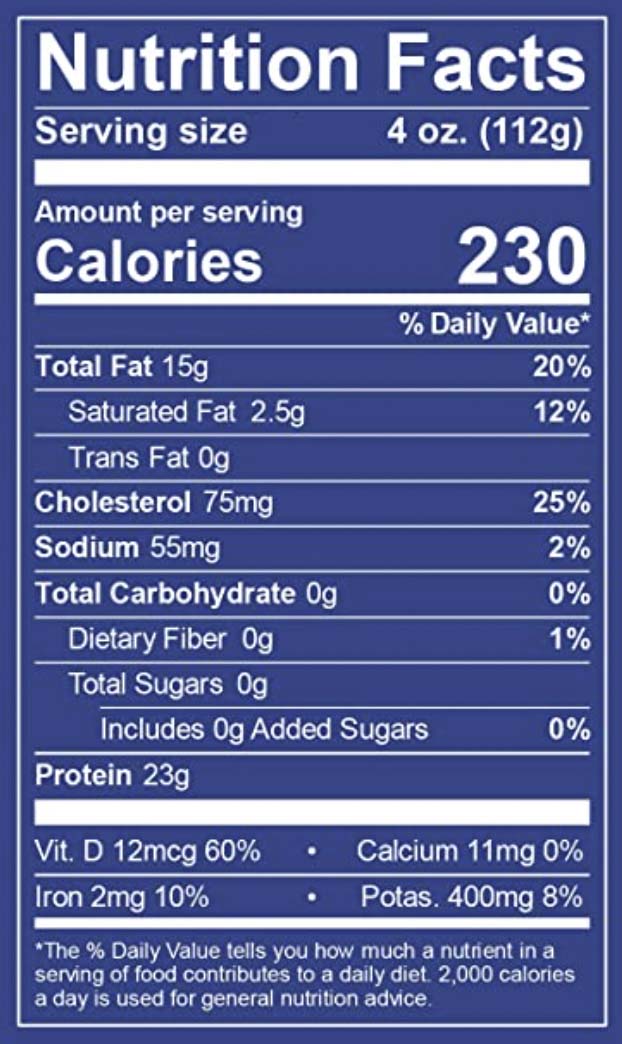
STORAGE
Keep frozen until ready to use.
THAW
Keep shrimp in the original packaging while thawing in the refrigerator overnight. For faster thawing, empty bag of shrimp into a clean bowl and thaw under cold running water for approximately 15 minutes immediately prior to cooking.
You might also like

DIGITAL FISHMONGER™
© 2022 Digital Fishmonger ™ , All Rights Reserved.
